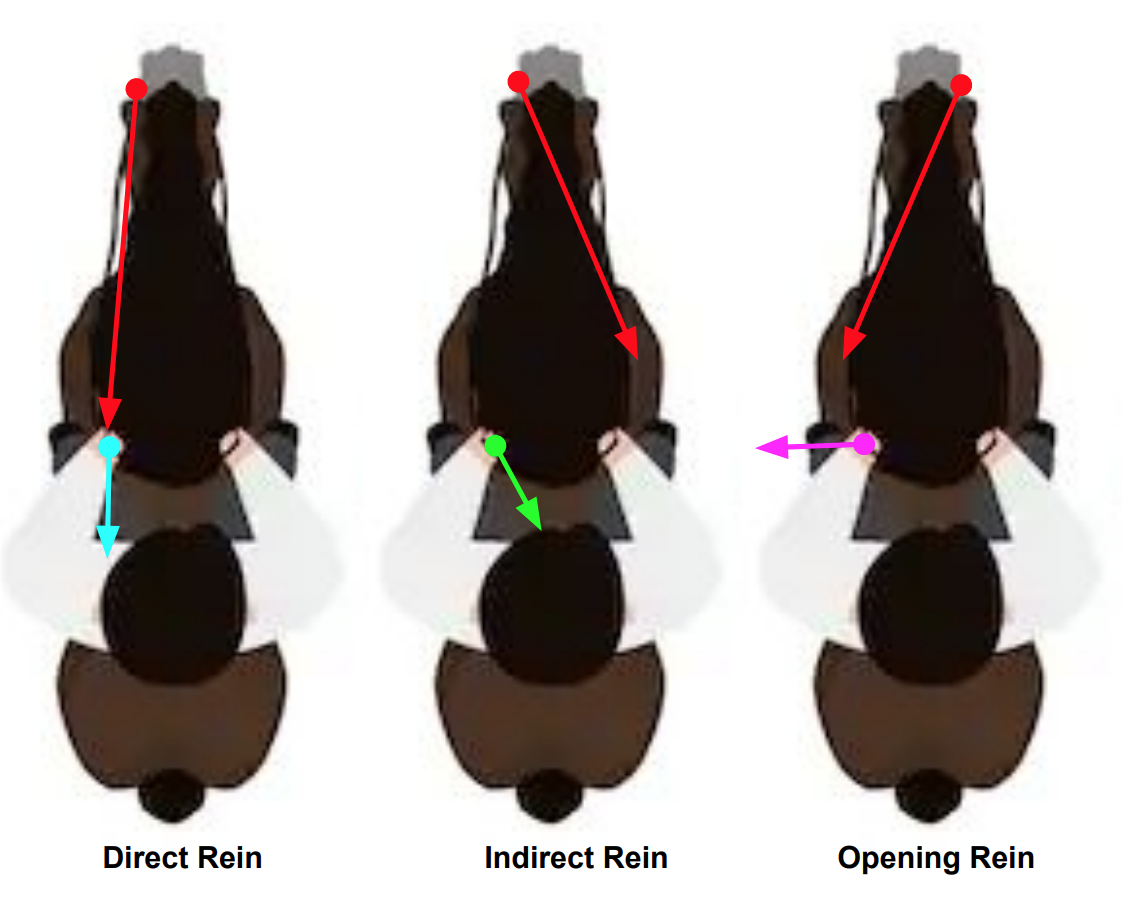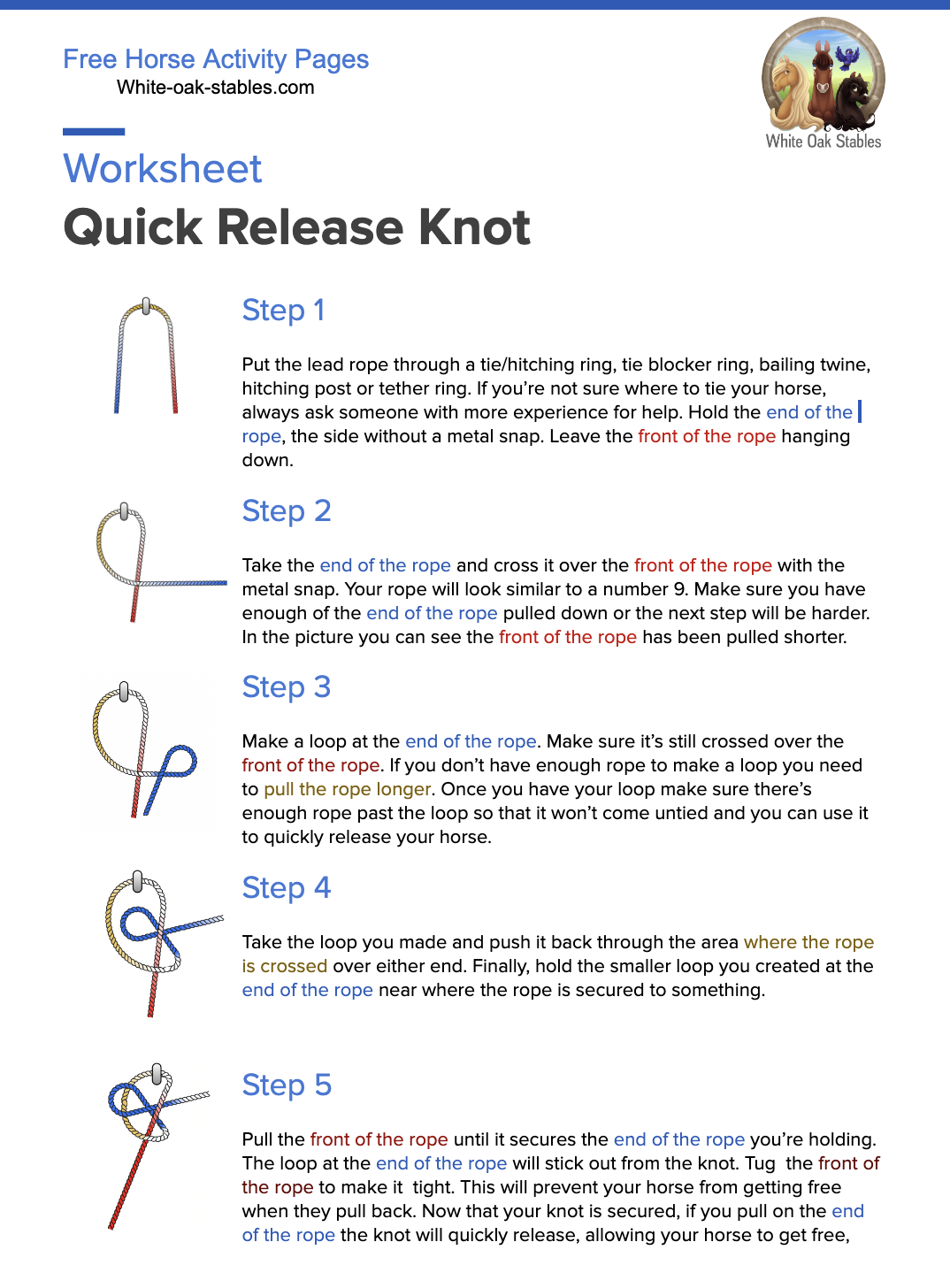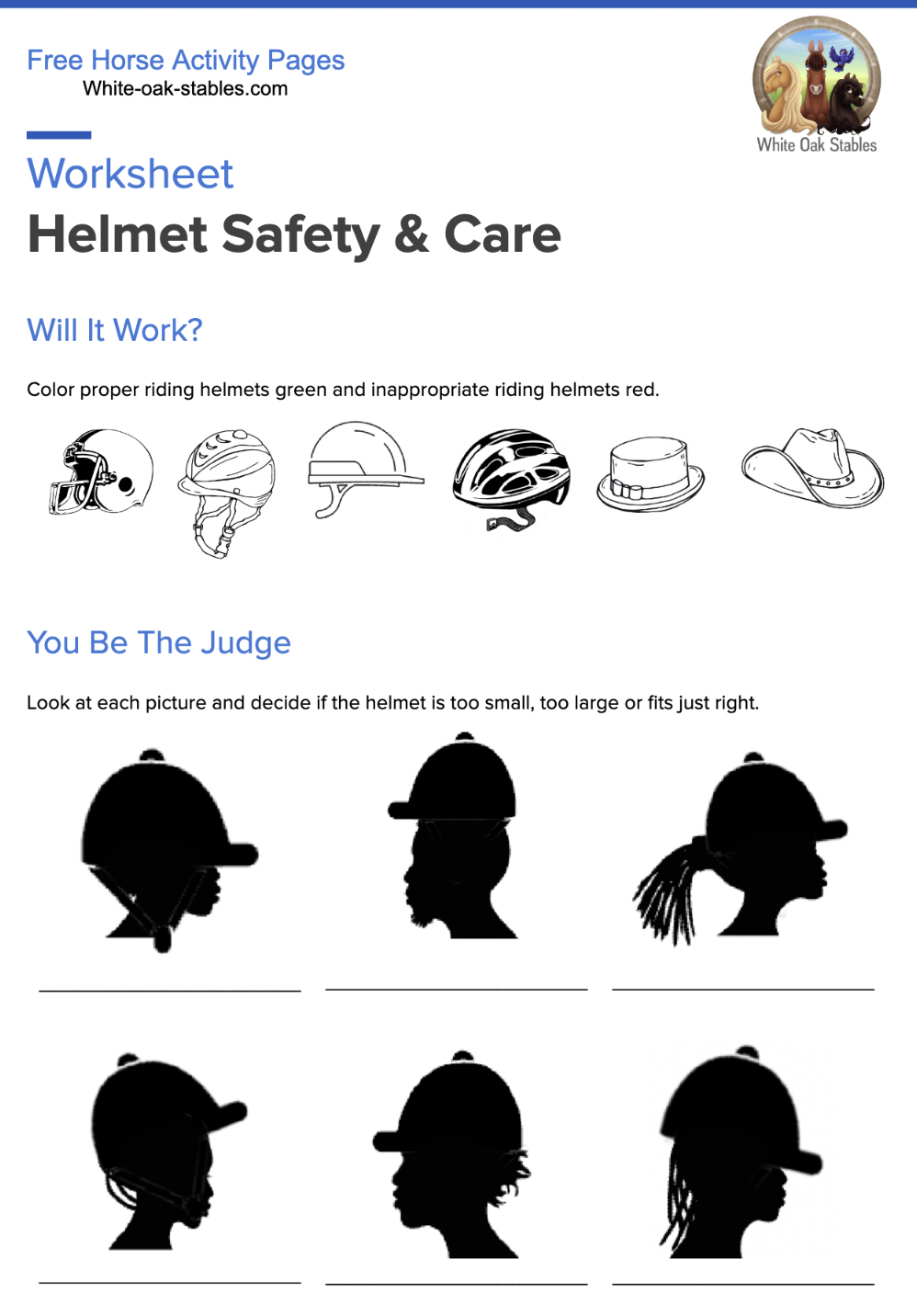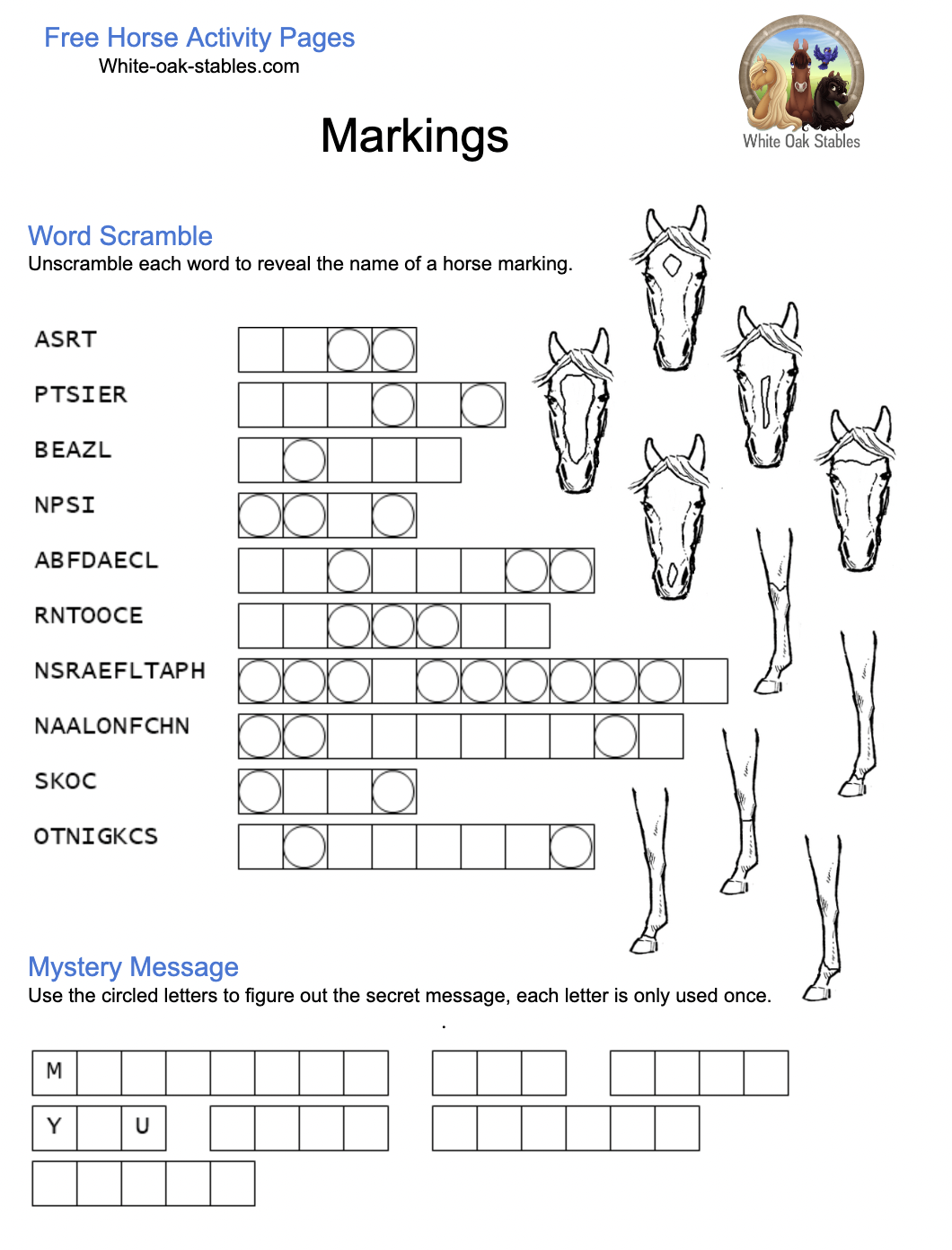I spent a full week working with a trainer I admire a lot with a large pony that I have in training to become a lesson horse. She is a rescue pony and builds up this huge amount of anxiety in her emotional jar until it’s overflowing and she just can’t handle aids from her rider anymore. During this week we spent together we talked a lot about our training philosophies and the aids you use when riding your horse. Our fascinating conversations are where the idea for the article was born.
One of the first things we talked about was your 5 aids while riding. That’s right there are 5 not 4. A lot of people leave out one of these aids or don’t understand what the last aid is — it is often confused with your seat which I will discuss later.
What Is An Aid?
Before we go too far down this path it’s important that you know what I mean when I refer to a riding aid. An aid uses a part of your body to communicate what you want to do in a way the horse can understand. The second part of the definition, in a way the horse can understand, is critical. If your horse does not understand what you want then you are not using an aid. An aid is a language understood by both the horse and the rider. Often times I will see people talk about an aid incorrectly being effective (or not) in this context. There is a distinction between a horse that understands your aids and a horse that ignores your aids.
The Five Aids
Hands
One thing that bothers me about this aid is that I often see it listed as reins instead of hands. Your reins are an extension of your hand that helps you communicate with your horse. Your reins by themselves don’t tell your horse anything. It is your hands that hold the reins and squeeze or pull to communicate to the horse. We often talk about your hands in terms of the type of rein you are using: direct, indirect, or opening rein.

A direct rein maintain a straight line from the bit to your elbow and you pull towards your hip to apply direct pressure to the bit on that side of the horse’s’ mouth to change their bend or when both hands apply a direct rein it tells the horse to stop.
An indirect rein breaks the straight line from your bit to your elbow as you pull towards your opposite hip. This applies pressure on the same side of the horse’s bit asking them to bend in the direction you are pulling. The hand pulling towards you hip never crosses over the horse’s neck, you should always have one hand on each side of the horse’s neck.
Finally an opening rein breaks the straight line from your bit to your elbow and opens away from the horse’s neck in the direction you wish to go. This puts the majority of pressure on the opposite side of the bit to turn your horse’s head in the direction you wish to go.
Legs

Your legs are one of your most important aids. They tell your horse to go forward, to steer and to move or block the movement at the hip or shoulder. This means they are responsible for maintaining speed, rhythm, bend, connection and collection. This is why it’s important to have a stable, quiet leg instead of one that swings or sends a lot of mixed aids to the horse. You will often hear of a horse becoming dead to the aids or dead to the leg — this is usually born from a horse that gets a lot of mixed or confusing leg and therefore ineffective leg aids so it starts to ignore them completely.
Your leg aids are accomplished by putting your leg in one of three positions in either a neutral or active role. The first position is the standard one, right at or slightly behind the girth (blue line). The second is a position that affects the horse’s shoulder and is slightly in front of the girth (green line). The last position is behind the girth and affects the horse’s haunch (red line). A neutral role is when your leg is in the position but not actively being applied by squeezing it against the horse’s side. Conversely an active position is when the rider’s leg is in the position and is actively squeezing. When you combine the combination of these aids with both legs making separate requests you can quickly see why your legs are one of your most important aids while riding as the combination of aids you can apply is much higher than the rest.
Seat
Your seat is a more subtle aid than some of the other ones. It involves using your seat bones to affect the movement of the horse. A driving seat uses your lower back and hips to create a pushing movement that encourages them to go forwards. A neutral seat allows your hips to move in sync with the motion of the horse’s swinging gait. A sinking seat reduces the following movement of the hips and relaxes the seat and lower back muscles to encourage the horse to slow down or stop.
Voice
This aid should be obvious but I find it is missed sometimes. Your voice, vocalizations or voice commands can also be an aid. Typically this is in the form of “whoa” or “halt” in its most basic form. However many horses through the process of training understand “walk”, “trot” and “canter.”
Weight
Finally, we come to the last aid in the list. This one is trickier than the others because it is quite often left out completely or it’s lumped in with the seat aid however it can be applied to all of the aids above. How heavy you make your hand or your leg or your seat bone or your shift your weight in your stirrup can tell your horse where you want to go without moving a leg or ever squeezing or pulling your reins. To demonstrate this, you really need to grab a friend. Stand in front of your friend and and put your hands behind you. Have your friend put one of their fingers in each of your hands and both of you start walking forwards. Now have your friend put more weight on the finger in your left hand (you’ll turn left), then your right hand (you’ll turn right), then both hands (you’ll stop). Now have your friend put weight in both hands but more weight in the left hand than the right hand (you’ll do a half pass). This is a great exercise to show how effective using your weight can be using only your hands and your friend’s two fingers.
Natural vs Artificial Aids
I see mention of artificial aids often and I wanted to take a minute to talk about it. The distinction that I see people draw is that a natural aid uses one of the aids I’ve mentioned above, while an artificial aid is the bit or a crop or spurs since they are not given directly by your body. However, an aid is just pressure you apply to a part of the horse’s body to signify your intent and to provide communication. A bit or a crop or a spur are just an extension of a part of your body that is trying to communicate to your horse therefor I would not consider them to be artificial when they are achieving the same result.
Effective Vs Ineffective Aids
What is an effective aid? If you ask your horse to move to the left and it does, is that effective? If you ask your horse to move to the right and it doesn’t respond is that ineffective? Before we define these I think it’s important that we must draw a distinction between a horse that does or doesn’t understand the aid you are giving it. If a horse understands the aid and responds, it is effective. If a horse doesn’t understand and responds does this also make it effective? To this I would say it depends. If you cannot reliably reproduce applying an aid and your horse moving off in the direction you intended then it’s actually ineffective because the horse does not understand your intent. This is different, in comparison, to a horse that understands the aid yet refuses to respond to it with some riders yet does with other riders. A horse with this problem is typically said to be dead to the aid for the rider who gets no response, however this can also be a problem with the rider not applying the aid correctly — thus also making it ineffective.
Using A Crop Or Spurs
In my experience, having to use a crop or spurs falls into one of these categories:
- The horse has a behavioral problem
- The horse does not understand the rider’s aid
- The rider cannot apply their aid accurately or consistently
- The rider has a physical weakness that makes the application of their aid ineffective (too short to reach the barrel, can’t squeeze enough)
- The horse does not understand how to go forward
- The horse does not understand how to maintain rhythm AND the rider doesn’t know how to effectively address the problem
- The horse has become dead to the aids, unresponsive or is choosing to ignore it
- The horse is extremely lazy or out of shape
IN ALMOST ALL of these situations, a crop and spurs are not necessary and the problem can be fixed with training on the part of both the horse and rider. My personal opinion is that a rider should NOT need either a crop or spurs to properly and effectively ride their horse, however I understand there are situations where they are useful and necessary.
Using A Bit
To bit or not to bit? This is a huge debate and all I will say is that it depends. Any bit in the wrong hands can be harsh and abusive, just as any hackamore in the wrong hands can be harsh and abusive. All riders should be taught to use their tack properly and effectively and as minimally and accurately as possible.




